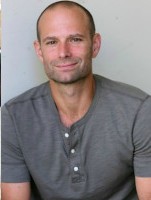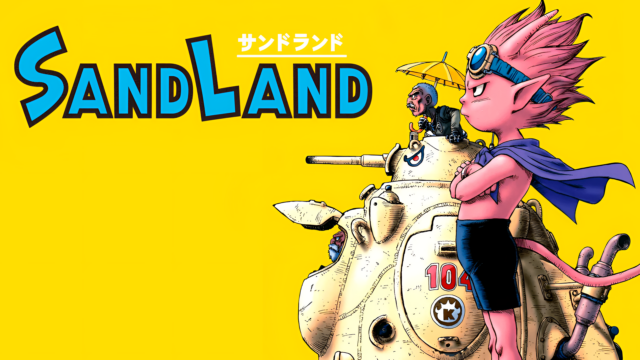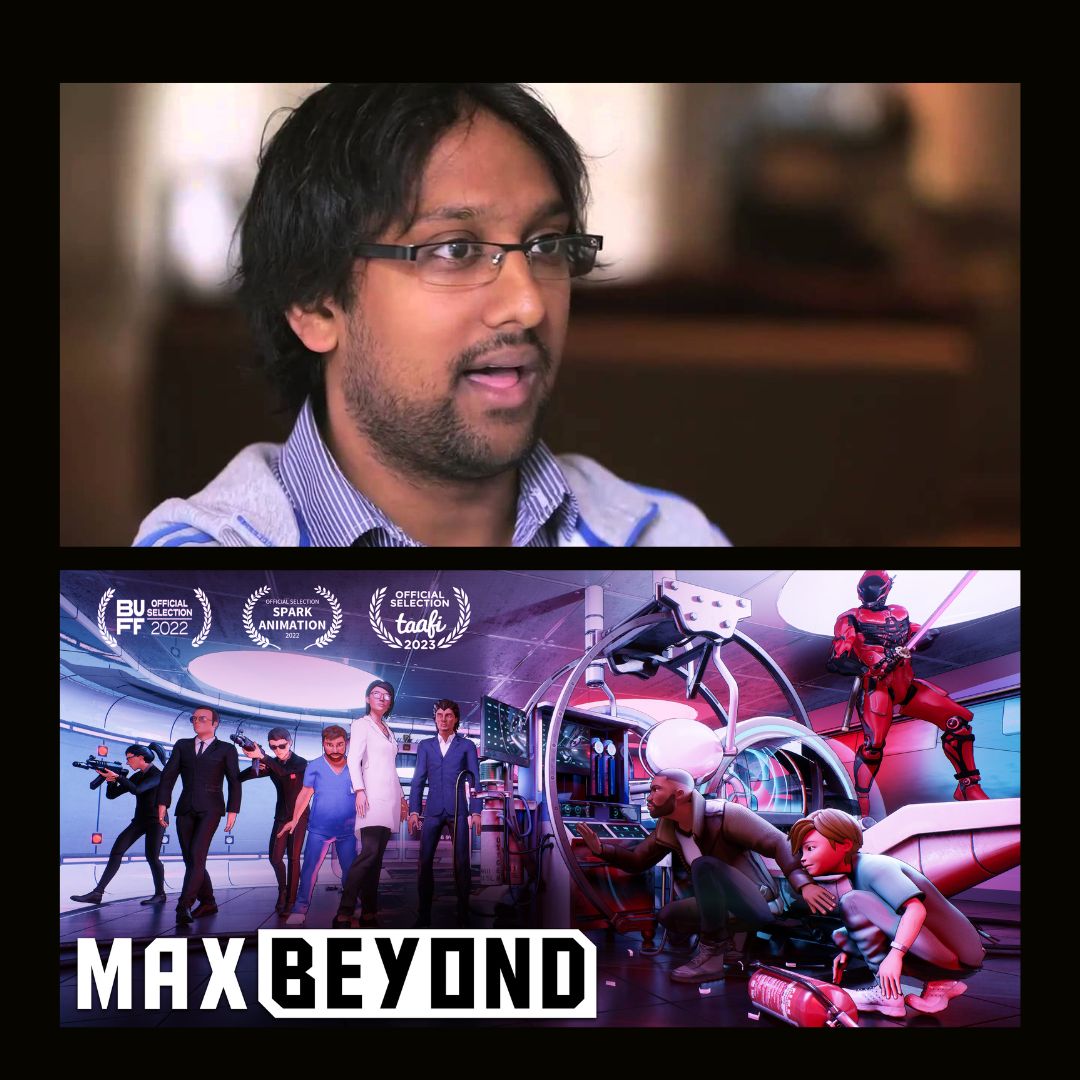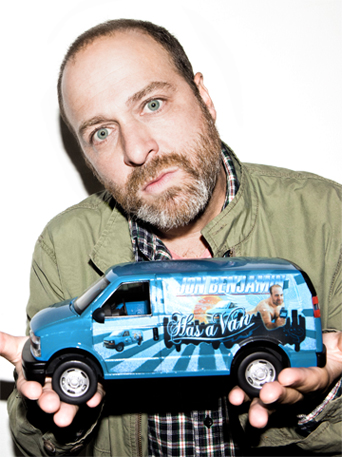“Solar Opposites” Exclusive Interview: EP Josh Bycel On Distancing The Hulu Series From “Rick and Morty”

A family of aliens flees their doomed planet only to crash land on ours. Stuck in the epicenter of American suburbia, they disagree on whether they hate or love their new home. In this exclusive interview, Solar Opposites showrunner Josh Bycel talks about the ways in which his team is trying their hardest to stay productive amidst the coronavirus pandemic, how his experience writing for American Dad! has prepared him for his latest project, and whether or not he believes his new series will be able to escape the daunting shadow of Adult Swim mega-hit Rick and Morty.
Tim Brinkhof: Animation, like video games, can in theory be produced remotely, although they require a lot of heavy equipment that not everyone might have available at home. How’s the Solar Opposites team handling quarantine?
Josh Bycel: So the show has been picked up for two years; the scripts for the second season are pretty much almost done and we were able to send home the animators with computers. Since we work in the same offices as Rick and Morty, we combined forces and sent everybody home. It’s worked well so far, but I don’t know what’s gonna happen once we have to send our material to Vancouver to get colored and all that stuff, because we’re not quite there yet. As for the first season, it’s basically done; we’re just mixing the last episode or two, getting the music, but it’s done and releasing in a couple weeks.
T: Justin Roiland’s other show, Rick and Morty, was based on one of many shorts he produced for Dan Harmon’s Channel 101 back in the day, called The Real Animated Adventures of Doc and Mharti. Did Solar Opposites have a similar origin?
J: You know what—I don’t have the full answer to that. I came on a little after when there had already been a full script in development; I think it really just came from sketches and drawings that Justin was doing. He’s got these amazing, big books where he’s got all his sketches. It came from there, and from Mike McMahan’s love of sci-fi, and their just wanted to do something a little bit different from Rick and Morty—something that, on the surface, was a little sweeter.
T: How far into the development were you brought along?
J: I was brought in when the show was first going to Hulu, so pretty early on. There was one version of the first script. And for me—being a huge Rick and Morty fan, having done animation—I read it and thought it was just nothing like I’d ever seen; I loved the idea, and the opportunity to work with [Mike and Justin] was just a no-brainer for me.
T: Has the project changed much since you joined the team?
J: These things naturally evolve. In the beginning, we started with this family, with what seemed like classic sitcom stories, and then immediately twisted them in a weird way. That was always the idea—we all bonded over our love for a lot of these 80s, TGIF sitcoms, and wanted to twist them in the most twisted way we could. Once we brought the other writers on, it was a natural evolution. We were also able to basically do everything we want. It was the first show I had worked on in a long time where we could be like, “Hey, this idea’s insane; let’s do that!” Creatively, it was super fulfilling.
T: What distinguishes Rick and Morty from most other sitcoms is that it both episodic and linear at the same time. Is Solar Opposites like that, too?
J: There’s a hidden throughline in the first season—a whole storyline that doesn’t involve any of our characters, and culminates in the seventh episode that’s pretty much entirely this other story. We wanted to make all the main episodes episodic—just one offs—and then have a throughline with different characters that’s very dramatic and serious, in a fun way, a way that I think people are gonna be super psyched about.
T: As you’ve no doubt experienced, it’s hard to talk about Solar Opposites without also talking about Rick and Morty. Not only do the two programs share some of the same writers, but the art style is similar, too. Do you see the enormous hype around Rick and Morty as good or bad when it comes to the fate of your own show?
J: I worked on American Dad!, which obviously came after Family Guy as another one of Seth MacFarlane’s shows, and it took a long time before people finally came around to it being a great show also, and a different show. Now, Rick and Morty is a supernova—a massive hit—and we knew that by having Justin do one of the voices, and having the art be similar, it would already get comparisons, so we really tried to keep it as separate as possible and just do our own thing, because you can’t compete with Rick and Morty—it’s so good, and so different. I took that lesson from American Dad!; let’s make our own great show, and people who love Rick and Morty will hopefully love this one, too.
T: It’s interesting you put it like that, because I remember when the teaser for Solar Opposites dropped on YouTube a few weeks ago, the most common reaction from fans was: “Where’s the second half of Rick and Morty season 4?”
J: Obviously, the average fan isn’t aware of how things work, that there are different shows with different production crews and different writers, and that one has nothing to do with the other. Solar Opposites coming out does not at all affect the schedule of Rick and Morty. In fact, there are new Rick and Morty episodes coming out just before us. Not to mention, Rick and Morty is on Adult Swim, and we’re on Hulu. We treat [the success of Rick and Morty] as an asset because, in this day and age, it’s so hard to stand out through all the new stuff that’s being released—so why not have something like Rick and Morty to help sell it? To us, it’s always been an asset, and Justin’s talented enough to work on multiple things, and, of course, the fans of Rick and Morty are super-fans, and they want more, and should want more.
T: Was that also one of the reasons why you chose to bring out Solar Opposites so closely behind the rest of Rick and Morty season 4?
J: We got this date a while ago, and the decision was made by someone higher up than me.
T: When you look at the production history of the show, it was originally green-lit by Fox. Then, it was shelved, and finally brought to Hulu. Do you know why Fox didn’t keep it?
J: Maybe they felt it was too edgy, or they had other shows at the time; you never really know, but 20th Century Fox—the production company—always believed in the show. Marci Proietto, who does all the animation there, always believed in it. I think, for Hulu, it just made sense, and they have been a great partner. But there’s always so many factors and most of them don’t even have anything to do with the show; it’s about how much space you have and what kind of needs you have…and the people that were there at Fox aren’t, I think, even there anymore! So, yeah, it could have been a million different things. But, to be honest, it found the right home. I mean, we’re on Hulu; we can do so much more than you can do on Fox or even Adult Swim.
T: There aren’t any restrictions at all?
J: Almost none. I remember at American Dad! our standards and practices notes were like four pages long. Hulu gives us notes, and they’re great, but we really have been able to do almost everything we wanted to. It’s one of the reasons their adult animation works so well.
T: I’m a little curious about what it was like working with McMahan. When I watched Rick and Morty, I tried to identify the specialties of each writer, and noticed McMahan often received credit for huge high-concept sci-fi episodes, like the season 3 premier, Rickshank Rickdemption.
J: Well, when you write—especially in comedy and animation—everyone’s involved in almost all the episodes, even if someone’s name is on them. No episode of Rick and Morty gets animated without first going through Dan Harmon, the executive producer, and all of the writers. And Mike, he started as a PA on Rick and Morty and rose up to be a producer. It’s a joy to work with him. When it comes to high concept stuff—big ideas—he’s a joy to work with. He loves animation so much so that when anyone would pitch anything, he was always the first to say, “Yeah, let’s try to make that work,” and I think Rick and Morty taught him that, as long as you do it in a smart and interesting way, you can do anything you want.
T: Sticking with high-concept stuff, can we expect that from Solar Opposites, or will it be more like a sitcom-spoof, as you mentioned earlier?
J: I think it always starts like that, and then it spins. We have an episode where the aliens realize they’re not liked in the neighborhood, so they try to figure out how to be liked, and what they do is they put thousands of tiny nanobots in the water in order to study everybody’s pee. Then those nanobots become sentient, and destroy the town. Each episode starts in a relatable way, and then it spins and spins and spins. They see one of their neighbors and he explains to them what a ‘man cave’ is and they’re like, “We want a man cave!” When the aliens get nervous, they don’t sweat, they goobler—basically, these tiny animals come out of their skin, and we have an episode that delves into that and what happens when you get, like, super stressed. We always start at a place where the aliens are trying to understand something on earth, and it always turns into an insane thing.
T: In a lot of sitcoms, people don’t change. At the end of each episode—no matter how crazy the adventure—every character always reverts back to their original shape. Morty is an exception to that rule. Are any of the characters in Solar Opposites also?
J: Our big character arc happens in the B-story. As for the main cast, Korvo [Justin Roiland] is someone who starts hating earth but comes around to it. He’s that guy who says he doesn’t want to get invited to the party and then gets pissed when he doesn’t get invited to the party. We watch him over the course of eight episodes secretly learning to love Earth even though he consistently denies it. On top our season finale is a great flashback/time travel episode where the aliens go back to their planet and we can see how they changed and what they learned since they left.
T: When you first started working on season 2, did you sit down with the other writers and ask yourselves if there were any lessons you should take away from round one?
J: One of the things we learned was: bigger. Our season 2 episodes—there’s some amazing stuff in there, and I think it was just about keeping pushing these characters and pushing the story in ways you don’t expect.
T: Will season 2 introduce any new characters to the main cast?
J: We introduce new characters into our B-story. We’re in the middle of casting that right now. For the first season we have Alfred Molina, Christina Hendricks, Andy Daly and Nat Faxon. Other than that, no regulars, though we are introducing a bunch of new characters as well as bringing back some from the first season.
T: Were there any sci-fi shows that inspired you?
J: One of the great things about this show—and Rick and Morty does this too—is lots of great references. We have lots of homages to Outer Limits and Twilight Zone and Star Trek and Star Wars—so many, it’s hard to keep track; every episode is chock full of them.
T: What about programs that have come out in the past with a pretty similar premise, like Alf or 3d Rock from the Sun?
J: I know there’s an Alf joke in the second season somewhere; I don’t know about the first. Those were great shows for their time, and we just felt like there were more stories to tell in different ways. One of the big differences is the aliens of those programs were hiding. Ours are not; we decided early on we weren’t going to spend time with people freaking out that they’re aliens. They crash-land into this house in the suburbs and nobody is like, “Holy shit, an alien!” We move past it right away, and I think that makes a big difference.
T: You’re subverting a trope that up to this point has been fundamental to the genre.
J: That was the idea from the very beginning.
Solar Opposites premieres May 8, only on Hulu. This interview has been edited and condensed for clarity.
























Hi Ashley, thank you so much for reading and we love the feedback. Note that on that day we had 14th posts go up and only ten posts show on the front page, so it's possible the preview had already been archived by the time you got to it. One recommendation would be to add our RSS feed to your favorite news aggregator service like Feedly, this way you get all of the latest posts!